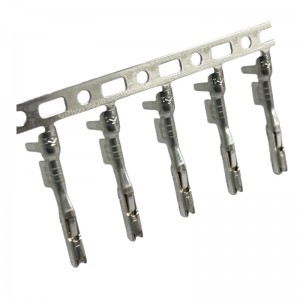
1. The automotive terminal connection is not solid.
* Insufficient crimping force: Adjust the crimping force of the crimping tool to ensure a firm connection.
* Oxide or dirt on the terminal and wire: Clean the wire and terminal before crimping.
* The conductors have a poor cross-section or are too loose: If necessary, replace the conductors or terminals.
2. Cracks or deformation after auto terminal crimping.
*Too much pressure on the crimping tool: Adjust the crimping tool's pressure to avoid terminal or wire deformation from excessive pressure.
*Poor quality terminals or wires: Use good quality terminals and wires to make sure they can take the force of the crimping process.
*Use the wrong crimping tools. Choose the right crimping tools. Don't use rough or mismatched tools.
3. Wires slip or loosen on automotive terminals.
*Terminals and wires don't match well:Choose matching terminals and wires for a solid connection.
*The terminal surface is too smooth,so the wire doesn't stick well:If necessary, in the terminal surface for some treatment, increase its surface roughness, so that the wire is better fixed.
*Uneven crimping: Make sure the crimping is even to avoid uneven or irregular crimps at the terminal, which may cause the wire to slide or loosen.
4. Wire breakage after auto terminal crimping.
*Conductor cross-section is too fragile or has damage: use the wire to meet the requirements to ensure that the size and quality of its cross-section meet the crimping requirements.
*If the crimping force is too large, resulting in wire damage or breakage: adjust the strength of the crimping tool.
*Poor connection between conductor and terminal: Make sure the connection between terminal and conductor is firm and reliable.
5. Overheating after automotive terminal connection.
*Poor contact between terminals and wires, resulting in increased contact resistance and excessive heat generation: Ensure good connection between terminals and wires to avoid overheating caused by poor contact.
*Terminal or wire material is unsuitable for the application environment, resulting in overheating: Use terminals and wire materials that meet the requirements of the application environment, to ensure that they can work properly at high temperatures or other harsh conditions.
*Excessive current through the terminals and wires, exceeding their rated capacity: for high current applications, select terminals and wires that meet the requirements, and ensure that their rated capacity can meet the actual demand, to avoid overloading caused by overheating.
Post time: May-08-2024
